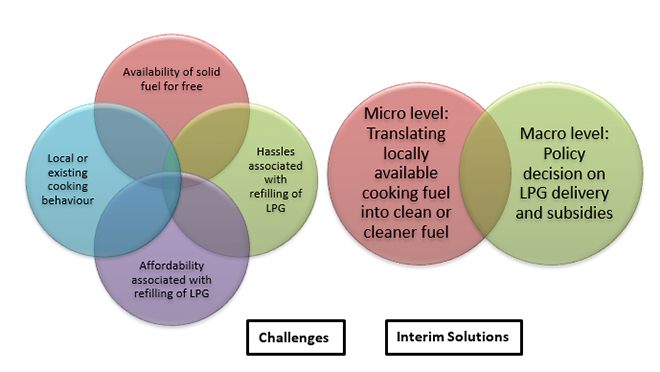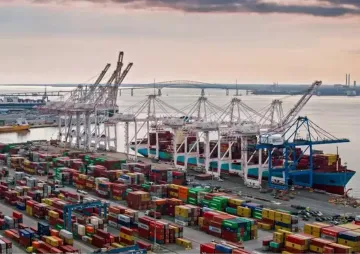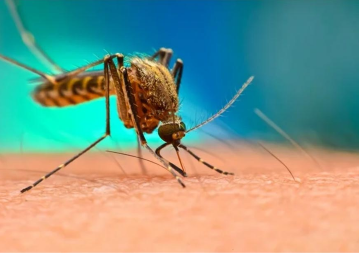
One of the major sources of indoor air pollution (IAP) is the usage of solid fuels (like firewood, dung cakes, agricultural residues) for cooking in traditional mud stoves. In rural India, the usage of solid fuel for cooking purposes has been prevalent for ages. As per the Global Burden of Disease Programme, the number of deaths attributed to an illness as a result of Indoor Air Pollution (IAP) was 51.03 per 100,000 individuals in the year 2017. In India the Pradhan Mantri Ujjwala Yojna (PMUY) was launched in 2016 with the aim to provide subsidized Liquified Petroleum Gas (LPG) connections were provided to low-income households. Presently, the active domestic LPG connections under PMUY are about 80 million which cover about 97% of households. Among PMUY consumers from May 2016 to June 2019, 24.6% of consumers never came for refills and 29.6% availed only one to three refills.
Rural households with LPG connections continue to depend on solid fuels. One of the reasons is the availability of firewood or other forms of solid fuels in abundance and incurs no cost if collected<1>. LPG on the other hand incurs refilling cost. The refilling cost varies from state to state and is subject to change monthly. For example, the LPG cylinder price on April 2020 in Lucknow was INR 779 and in May was INR 589 while the cost of LPG cylinder in Guwahati in April 2020 was 793 and in May was INR 573. The other reason for not using LPG as primary cooking fuel in rural areas is the inconvenience associated with the refilling of LPG cylinders. Many of the households kept their stoves as a precious possession and traditional mud stoves remained their primary cooking technology.
A recent study mentions that people exposed to air pollution are more likely to get affected by COVID 19 than people living in areas with cleaner air. Presently, no research directly establishes a link between IAP and the impact of COVID 19. However, considering the results for a link between air pollution and COVID 19, it is important to improve the indoor quality during and post-COVID 19 crisis. The approach should now be to intensify the usage of clean fuels to improve indoor air quality.
The government announced that about 80 million PMUY users will get three LPG cylinders for free between April and June. After 3 months, issues of affordability might again impact usage of LPG. In addition, the reduced economic activities during the COVID crisis are likely impact the usage of LPG. In addition to affordability, local cooking behavior also impacts the usage of LPG. For example, the households in the villages of western Uttar Pradesh generally own cattle for milch or agricultural purposes. In such villages, groups of 10-15 households are formed and each group together collects & prepares dung cakes for cooking purpose<2>. These households are not economically weak and almost all possessed LPG connections. Still, dung cakes remained their dominant cooking fuel.
In the time of COVID 19, the adoption of clean fuels is to be emphasized along with access. There are two ways to enhance the adoption of clean cooking fuels. One is to enhance the usage of LPG by addressing the challenges associated with the adoption of LPG. Another is to translate the local cooking behavior into a clean or cleaner cooking solution. A mix of macro and micro-level approaches may be adopted to amalgamate local cooking behavior and improving the usage of LPG so that the objective of increased usage of clean cooking solutions is achieved. For example at a micro level, in localities with a considerable number of domesticated cattle populations, the clean cooking fuel will be biogas and the cleaner fuel will be the usage of dung cakes through improved cookstoves. At the macro level, the policy decisions on improving the delivery of LPG cylinders and subsidies on refilling are to be considered.
Figure 1: Challenges associated with the adoption of LPG and their proposed interim solutions
 Source: Created by the Author
Source: Created by the Author
The micro-level initiatives depend on the existing cooking behavior and economic scenario. The non-functionality of biogas plants installed during the National Programme on Biogas Development (NPBD), initiated in 1982, was due to the non-availability of cattle/dung, easy availability of other convenient fuels and other technical issues. Thus, biogas for cooking is to be initiated only in areas with the availability of adequate feed material with potential for the creation of robust local level repair & maintenance arrangements. Similarly, cost-effective improved cookstoves are to be promoted at the local level suiting existing cooking behaviour. For example, the improved cookstoves which need the conversion of firewood into smaller pieces are not preferred due to inconveniences associated with the chopping of firewood<3>. Similarly, in the areas where coal is the dominant cooking fuel, the improved cookstove based on firewood is not felt sustainable by users<4>.
The long term goal is to completely shift towards clean cooking sooner or later, where LPG plays an important role. This need has become even more urgent in wake of the pandemic gripping the nation. The gap between the access and usage of LPG in the interim period can be filled with more adaptable options such as biogas and improved cookstoves. Other options at the nascent level are electricity and renewable-based cooking. However, till the complete shift in clean cooking behavior is achieved, the options of translating the locally available fuel into clean or cleaner cooking fuel and technology are to be considered seriously to improve indoor air quality.
<1> Based on Author’s interaction with the rural communities of Golaghat district in Assam during early March 2020
<2> Based on author’s interaction with the rural communities in Sarsawan Dehat (Block Sarsawa, District Saharanpur) during mid-March 2020
<3> Author's interaction within rural communities in Himachal Pradesh and Uttar Pradesh
<4> Author’s interaction with the rural communities in West Bengal
The views expressed above belong to the author(s). ORF research and analyses now available on Telegram! Click here to access our curated content — blogs, longforms and interviews.




 Source: Created by the Author
Source: Created by the Author PREV
PREV


